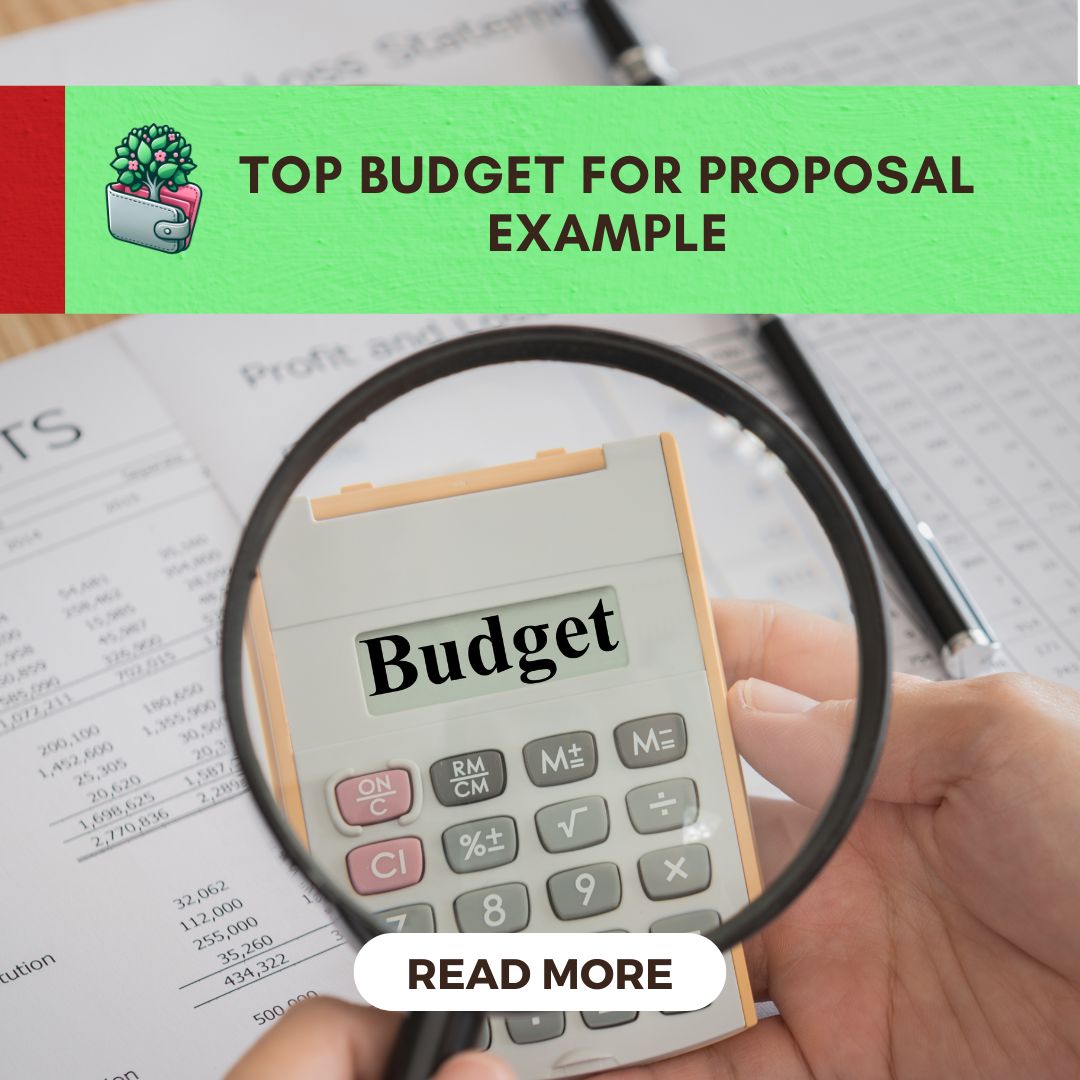Let’s get straight to it, mama, you’ve got a heart full of ideas and barely enough hours in the day to finish your coffee while it’s still hot. But that project, fundraiser, community playgroup, or family upgrade you’re dreaming about? It deserves to happen. And the key to unlocking it all? A rock-solid budget proposal written by you. Yes, you.
In this guide, I’ll walk you through the whole process in a way that’s doable, smart, and even kind of fun (really!). You’ll learn exactly what a budget proposal is, the elements you need to include, and how to explain your costs and benefits so the right people say “yes”. We also explain how to use tools (like our free template) to make it feel way less intimidating.
Let’s build something amazing, starting with the budget for proposal example that gets it off the ground.
Understanding the Essentials of a Budget Proposal
A proposed budget is like a roadmap with numbers. It’s a document that outlines the estimated costs of a a project and explains where, when, and why that money will be spent. A strong budget proposal outline gives reviewers a clear picture of what your particular project aims to achieve and how you’ll get there using the available financial resources.
Think of it as your project’s story told through finances. Whether you’re planning a community garden, organizing a parent workshop, or making a home improvement pitch to your household partner, this document assures everyone involved that you’ve got it all thought through.
A solid budget for proposal example doesn’t just help secure outside funding. Sometimes, it brings your own people on board. This includes your spouse, your team, and even your kids, when they realize summer camp takes planning! It’s where your dream starts to become something real.
Why a Well-Crafted Budget Proposal Matters for Your Goals
Money isn’t the only thing a good budget helps with. Honestly? It’s about clarity.
- It shows you what your project actually involves.
- It helps set clear boundaries around what’s included (so no more last-minute surprises).
- It gets everyone unified — whether it’s grant reviewers or Grandma chipping in.
As Grant Professionals Association explains, “A budget proposal is a communication tool that shows a project is not just desirable, but realistic.” When funders and family alike see that you’ve thought it through, they’re way more likely to say “yes.”
Key Cost Elements of a Successful Budget Proposal: An Easy Cost Summary
Let’s break down what your budget proposal template will usually include, in bite-sized form:
- Direct Costs – The “must-have” items (materials, staff, equipment).
- Indirect Costs – The behind-the-scenes support (utilities, admin time).
- Transportation & Lodging – If your project requires travel or hosting.
- Contingency Fund – Your “just in case” category for unexpected hurdles.
These cost elements provide a foundation for assessing feasibility, ensuring funders can trust the plan and its potential to achieve your strategic goals.
Decoding the Core of Your Budget: The Cost Breakdown
Direct Costs: What Directly Powers Your Project?
These are the engines of your budget, the items that keep everything moving. If you’re organizing a parenting workshop, this could include:
- Guest speaker fees
- Venue rental
- Printed materials
- Healthy snacks for the kiddos
These items are easy to see and easier to forget if you’re rushing. Write them all down. Think of every moving part required to bring your project vision to life.
As GEP explains, “Direct costs tie directly to a project’s core goals and deliverables.” Think: if you don’t have this item, the project can’t work.
Indirect Costs: The Supporting Pillars You Can’t Forget
Here’s where the invisible warriors come in.
Indirect costs are like the Wi-Fi or grocery bill in your house — you don’t see them in the spotlight, but without them, nothing works.
- Administrative time
- Internet or software fees
- Utility bills while working on the project
- Office supplies
They’re often underestimated or missed completely, which is a budgeting mistake we’ll get into later. Be sure to do resource allocation here to reflect your true operational needs.
Transportation and Accommodation: Planning for On-the-Go Needs
If your project involves planning events, visiting families, or attending training, don’t forget:
- Gas mileage
- Parking fees
- Hotel nights (if overnight)
- Public transportation or ride-share costs
These can eat up your budget request if you forget to plan for them. Better to estimate and explain than be caught off-guard later!
The Crucial Contingency Fund: Your Project’s Safety Net
Even the best-laid plans hit speed bumps, rain on event day, a price increase at the last moment, or a forgotten-but-crucial supply. This is where a contingency fund saves the day.
I usually recommend a 5–10% contingency line in your budget. That’s your cushion, so stress doesn’t sneak in when surprises do. This also helps account for projected expenses that aren’t finalized yet.
Beyond the Numbers: Essential Narrative Sections
Remember — your proposal is the complete story of your company or project told through numbers. A narrative is helpful here for guidance.
Your Project Description and Crystal-Clear Objectives
Imagine this: you hand over your proposal, and the person reading it gets it instantly — they understand the mission, the “why now,” and your vision.
This section helps you get there. Describe:
- What your project is
- Who it’s for
- Why it matters right now
- What outcomes do you hope for
Be personal. Be precise. Add a short story or emotion. People remember why before they remember how much.
Justifying Every Penny: Building Trust and Demonstrating Value
Here’s your chance to make your numbers make sense.
Include a line-by-line cost justification:
- “Snacks: $50 — to provide healthy food during our parenting circle, which reduces early exits.”
- “Craft materials: $100 — for kids’ supervised activity during adult sessions.”
Think like the reviewer: What would you want to know before giving a “yes”? Clarity builds trust.
As Charity Navigator explains, “Donors and funders value transparency because it shows accountability and planning foresight.” Mapping out the financial requirements this way can also give insight into the cost efficiency of each step within your project.
The Bottom Line: Presenting the Total Budget with Confidence
Once individual costs are listed, finish with a clean, total number. Round up the total amount and clearly label it “Total Estimated Budget.” This is also where you can highlight total cost versus available investment and pay requirements.
Add a footnote or visual (like a pie chart) to show major spending categories at a glance.
Mapping the Journey: Project Timeline and When Costs Will Be Incurred
Use basic visuals or tables that map:
- What’s happening when
- What costs are happening in each phase
Even a simple bullet list like this can help:
- Month 1: Planning and outreach ($100)
- Month 2: Workshop supplies and setup ($300)
- Month 3: Execution event + wrap-up ($200)
This shows you’re organized and helps with cash-flow if staggered funding is involved. It can also support department heads when aligning budget timelines with other priorities.
Step-by-Step Guide to Creating a Budget Proposal That Works
1. Define the Scope and Gather Information
Start with this checklist:
- What’s the project about?
- Who’s involved?
- Where will you operate?
- What resources do you already have?
- What do you need?
This is your baseline. Everything else flows from here.
2. The Art of Estimating: Try These Costing Techniques
- Ask vendors for quotes.
- Review past projects you or others have done.
- Use online calculators or Petite Budget’s Estimation Tools.
- Round Sensibly — always build in flexibility.
3. Structure Your Budget Proposal for Clarity
Use short subheadings, numbered line items, and total budget highlights. Break bigger ideas into charts or simple tables.
Don’t just tell, show.
4. Collaborate and Get Feedback
Before submitting or going all-in, run your draft past:
- A team member
- A friendly accountant or mentor
- Project stakeholders or co-leads
As Harvard Business Review notes, “Peer feedback transforms blind spots into opportunities.” These reviews are critical for improving completion confidence.
Empowering Your Workflow: Tools and Templates
Creating a budget proposal doesn’t have to be a late-night puzzle. The right budget proposal template can turn your scattered notes into a clear, professional-looking document, fast. Whether you’re outlining cost summaries, building a visual timeline, or writing out your justifications, using a structured format takes the guesswork out and saves you hours of formatting. Even if you’re squeezing this in between school drop-offs and dinner, your proposal can still look polished and persuasive.
And it’s not just about templates, smart tools can make the process even smoother.
Try these user-friendly, time-saving tools:
- Tiller Money – Connects to spreadsheets, auto-updates.
- EveryDollar – Visual budget for families or small groups.
- Google Sheets – For collaborating with team members.
- Notion – Combines project outlines with related templates and planning features.
Test a few and stick with what reduces your brain clutter — that’s your real tech winner.
Avoiding Common Pitfalls
- Underestimating Costs
It’s tempting to low-ball prices to seem lean. But underestimate now, scramble later. Be honest and build in wiggle room. - Lack of Clarity Means Less Yeses
If funders or stakeholders can’t follow your logic, you lose their trust. Explain things clearly, with examples. - Forgetting Hidden (Indirect) Expenses
Don’t let direct and indirect costs ruin your vibe. Always add in admin hours, internet, and utilities where relevant. - Skipping the Contingency Fund
Without a buffer, you’re one surprise away from stress. Add 5–10% for peace of mind. - Poor Formatting = Harder to Trust
Your content can be great, but if it’s hard to read, it won’t get read. Use bullet points. Highlight totals. Double-check grammar.
The Future of Budgeting for Community and Personal Projects
Emerging trends in funding are shifting rapidly toward digital-first platforms, with more funders moving online through crowdfunding, micro-grants, and social-impact hubs, making it essential to have a polished digital version of your proposal. At the same time, tech-savvy creators are leveraging AI tools to automate planning, streamline budgeting, and reduce manual workload. And as expectations evolve, transparency is becoming the ultimate superpower — funders now prioritize honest cost breakdowns and clear impact reporting over flashy presentations. This shift also highlights the increasing need for proper market research to stay aligned with industry expectations and funding approval trends.
Wrapping Up on Top Budget for Proposal Example
We’ve explored what a budget proposal really is, why it matters, and how to create one step by step — from understanding direct and indirect costs and justifying every dollar, to using budget proposal templates and tech that simplify the process. Now you know the tools, tips, and structure to turn that “someday” idea into a fully backed, fundable plan. I’ve seen these strategies turn hesitant planners into confident project leaders — and you can be next.
Remember: you don’t need perfection. You need progress and a plan that shows you’re serious. Your dream is worth funding and now, you know how to prove it. We’re here to walk with you. Let’s create something powerful, together.


